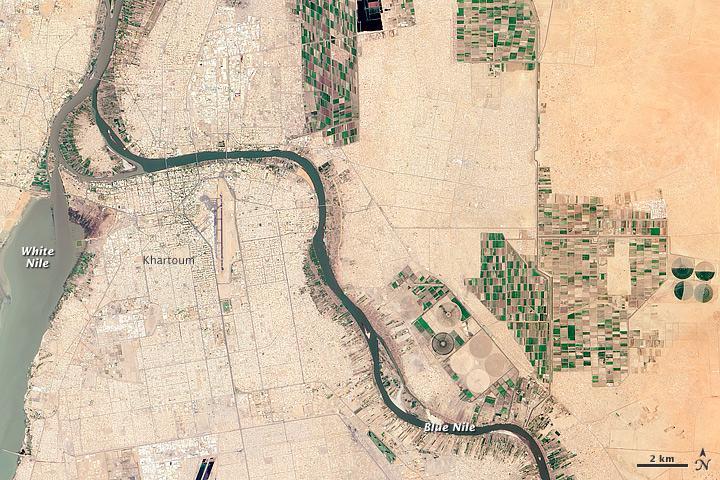End of dry Season#

Well-watered crops line the river banks, and patchworks of croplands (including center-pivot irrigated fields) dot the citys outskirts. This satellite image was taken near the end of the regions dry season. Compared to the White Nile, the Blue Nile is skinny and its highly variable flow is near its lowest point at this time of year. Harsh dry seasons and droughts can periodically dry out the Blue Nile completely.
The White Nile and Blue Nile derive their colors from the sediments they carry. Originating in the Equatorial Lakes region, the White Nile is rich in light gray sediments. As this long river meanders over flat terrain, it loses over half of its water to evaporation. Shorter than the White Nile, the Blue Nile starts in the highlands of Ethiopia and Eritrea, picking up black sediment en route to Khartoum.
The Blue Nile is fed by monsoon rains, and when rains are abundant, the Blue Nile can actually flow backward near its confluence with the White Nile. Upstream from both rivers, residents rely largely on precipitation for farming. Most of the water extraction along the Nile occurs in Sudan and Egypt, where rainfall is too sparse to support crops. More than 120 million people rely upon Nile waters for irrigation and other uses.